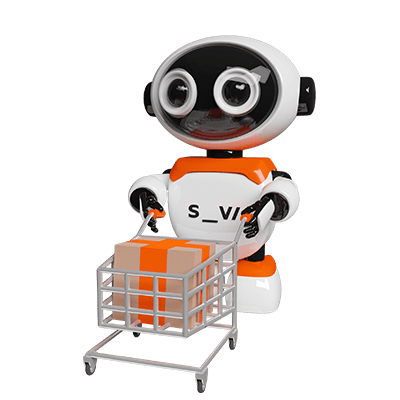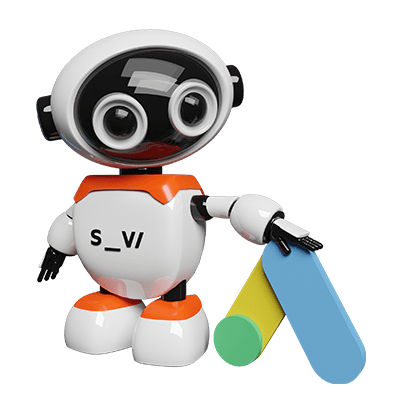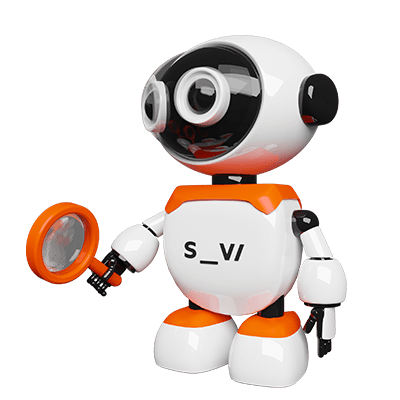Since Pascal’s first mechanical calculator in 1642, enhancing commerce has been a key driver of computer development. e-Commerce is just one in a series of retail revolutions enabled by computers—and now, a new one is emerging: AI-powered e-Commerce.
WHAT QUALIFIES AS AI?
Artificial Intelligence is a term that often escapes a fixed definition. One good explanation is: AI is whatever we haven’t yet mastered. For example, if an AI writes articles, we now call it a “language processor”—a task we once considered AI territory. That’s why it’s more accurate to use terms like machine learning or natural language processing, as these are the specific elements of AI that e-Commerce currently uses.
BIG COMPANIES ARE ALL IN ON AI
AI first entered commerce through search engines and advertising—domains long dominated by giants like Google and Facebook. Google’s DeepMind AI is used for recognizing spam, voice, and images, while Facebook employs AI to detect inappropriate content and organize posts.
Tracking consumer interest is an area where social media and search engines excel, and in the closed ecosystem of an online store, AI can be even more effectively applied.
Take search in an online shop—it’s a perfect task for AI. Traditional algorithms might show the most viewed items or similar products. AI, on the other hand, can recommend items that aesthetically match what the customer previously purchased. With every letter typed into the search bar, e-Commerce AI becomes better at understanding the customer’s intent, delivering results that far better match what the shopper is actually looking for.
DON’T UNDERESTIMATE THE BOTS

Advanced bots, a form of AI, are now widely used in e-Commerce. A well-designed chatbot can guide users through their purchase without them realizing they’re not chatting with a human. Bots can also trigger human intervention when needed, switching seamlessly without the customer noticing. Many bots, however, function independently and don’t require human assistance.
Amazon and Starbucks use intelligent assistants that predict what customers want and help them decide. Amazon’s AI is particularly good at anticipating your next desire—even when the connection isn’t obvious.
Say you recently bought a TV and a PlayStation. A standard algorithm might suggest an external hard drive. But AI might offer you sneakers—because it senses you’re someone who balances entertainment and health.
AI doesn’t have to appear in the form of a chatbot. Many stores use AI to recommend products without simulating conversation. ZARA, for instance, recommends clothing based on your size and personal style. Unfortunately, many of these advanced features aren’t available in all regions—mostly due to language barriers and the fact that many AI features are still in testing, often launching in the U.S. first.
HAS AI PASSED THE TURING TEST?

Alan Turing, the mathematician famous for helping crack the Enigma machine during WWII, is best known today for the Turing Test—a benchmark for defining true artificial intelligence. The test is simple: if a person talks to a machine believing it’s a human, the machine has passed.
Many current AI systems already pass this test.
Natural Language Processing (NLP) is the AI’s ability to communicate like a human, in terms of sentence structure, style, and grammar. One standout example is Google Duplex, an AI that can make voice calls or send messages to book appointments, like reserving a restaurant table or renting a trailer. It can even contact multiple providers to find the best deal. When Duplex makes a call, it uses a friendly, natural voice—and most people on the receiving end don’t realize they’re talking to a machine.
This service is available in many English-speaking countries, and it’s highly relevant to e-Commerce, signaling the rise of virtual call centers and more advanced customer service bots that can provide shopping advice, send emails, or even call customers—if regulations allow.
ALWAYS PRICED TO COMPETE
Perhaps the most powerful e-Commerce AI tool is dynamic pricing. If a business is bold enough to let AI handle pricing, it can adjust prices based on competitors’ offers—not just undercutting prices until reaching a minimum profit margin, but creating intelligent campaigns designed to maximize revenue.
For example, AI can detect when none of your competitors are running promotions on a specific product line and recommend a campaign with discounted prices and matching marketing.
Of course, a store owner might not accept every suggestion the AI makes—but it often spots opportunities a human might overlook. Dynamic pricing tools are available from major players like IBM, as well as from smaller firms. The sophistication varies—some systems analyze market conditions, product ratings, and more to build smart strategies, while more affordable ones require pre-set pricing triggers.
Most pricing AI tools are compatible with popular platforms like Magento, Shopify, WooCommerce, PrestaShop, and BigCommerce.
CAN MACHINES HANDLE ADVERTISING?
You may not realize that many sponsored posts you see on social media—especially global product ads—are crafted by AI. While AI can’t yet create a brilliant campaign the way a skilled marketing team can, it’s extremely fast at handling simple, repetitive tasks, analyzing performance, and offering insights for more successful campaigns.
AI is getting better at writing ad copy. Though it still lacks originality and brevity, it can pump out posts like “Best-selling styles from our new collection, starting at €99.99”—with links, well-cropped images, and even promotional stickers—at high speed.
For generating standard product posts, AI is becoming a very real option, freeing up human marketers to focus on strategy and creative work—tasks that are often neglected due to content production demands.
Clients still trust traditional agencies more—which is understandable—but AI is mostly used behind the scenes for ad performance analysis. AI can evaluate how each ad performed on social media or search engines, spotting patterns a human might miss.
Still, tools like Google Analytics and Facebook’s built-in analytics are already so advanced that AI might be overkill for many small and mid-sized businesses.
Interestingly, many large players are building AI that creates marketing campaigns. Services from Google Cloud AI, IBM Watson, and platforms like Acquisio are now available even to smaller advertisers.
Before wrapping up, it’s worth mentioning AI’s impressive results in inventory management, delivery logistics, and personalized messaging. Every day, new opportunities emerge—and we usually only see mature technologies. It’s hard to imagine what’s still being cooked up in labs.

WHO TO CALL, WHAT’S THE COST?
AI services usually come at a premium, and customers often have no clear idea how much computing power or “AI time” they’re actually getting. Many providers are vague about what kind of supercomputers power their services or how resources are distributed between clients.
Still, most platforms offer free trials for services like AI-driven ad analytics, personalized messaging, and dynamic pricing—so it’s worth trying them out. Be aware, though: setup takes time. You’ll need to properly integrate your e-Commerce platform and feed enough data into the AI system for it to work well. Testing isn’t always simple.
AI thrives on data. The more it has, the faster and better it learns—which is why big companies adopted it first. In Serbia, AI adoption will likely move more slowly, mainly because many AI tools don’t yet support Serbian at a truly native level. But plenty of tools—like those for ad analysis or price optimization—work regardless of language and are definitely worth testing.
Some U.S. companies saw sales rise by up to 85% after implementing AI. It’s not unrealistic to expect similar results for early adopters in Serbia. And if you’re wondering when to start thinking about it—the time is now.












